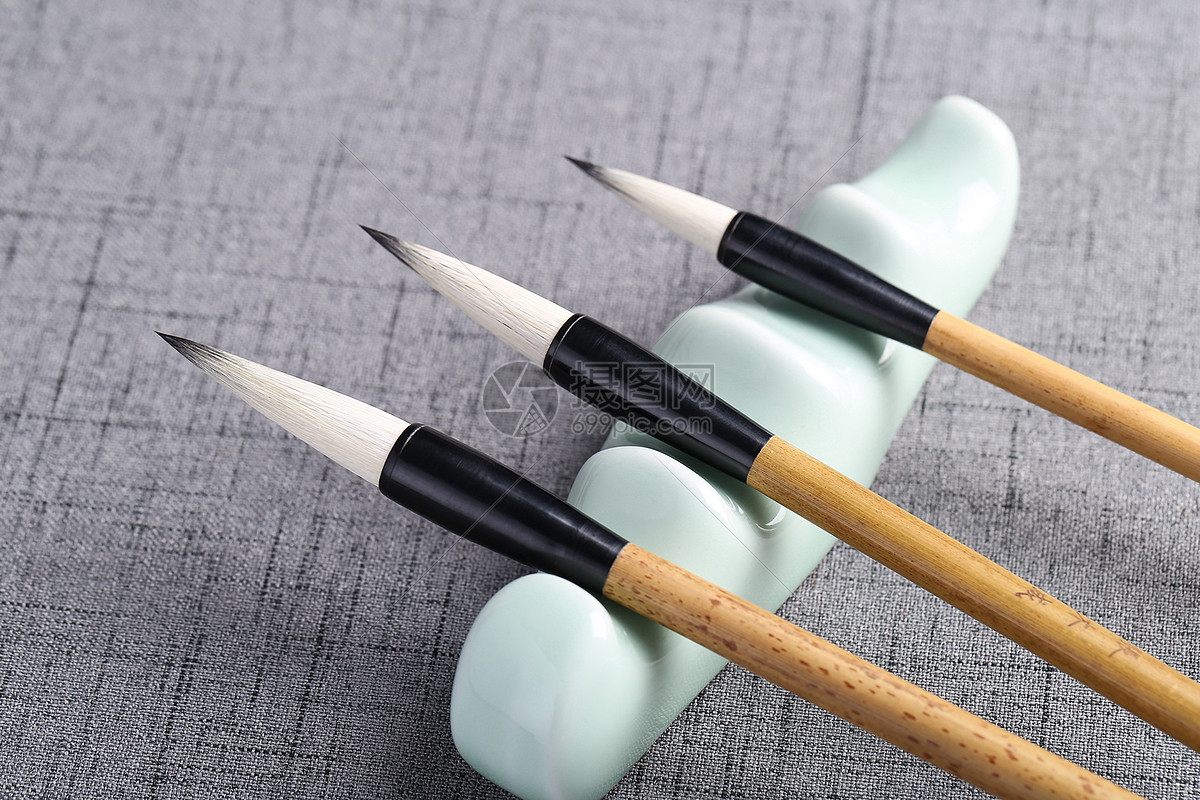Four Treasures of Study in Ancient China
In ancient China, brush pens, Chinese ink, paper and ink stone were four necessary tools in writing or painting. In the Song Dynasty, the began to be called ''four treasures of study''. They are stationary for practical uses, but as exquisite products, they can often be viewed as craft works and listed into the collection. The ''four treasures of study'' have a great number of varieties, and the best-known ones are Chinese brush of Huzhou, ink stick of Anhui, paper of Xuancheng and ink stone of Duanzhou.
1. Brush pen
Brush pens have the longest history among the ''four treasures of study'' and are made primarily of small bamboo pipes and hair from beasts. Those made of the hair of goats, hares and weasels are most commonly seen, and are respectively called ''yanghao'' (goats' hair), ''tuhao'' (hares' hair) and ''langhao'' (weasels' hair). Brush pens manufactured in Huzhou of Zhejiang Province are made of carefully selected hair and the tips of the pens are prefectly round and even. Therefore, they are flexible and springy in use.

2. Chinese Ink
Chinese ink sticks are typically made of the soot of pines. When producing pine soot ink, pine wood is lit but prevented from fully burning. In this way, it will emit black soot which later turns into very tiny black powder after it cools down. The ink sticks produced in Shexian County of Anhui Provinece have enjoyed a good reputation since the Tang and Song Dynasties. The top quality pine wood and spring water in this area provide the best raw materials for the production of Chinese ink sticks. The ink stick of Anhui is hard and emits fragrance and feels smooth in writing.
3. Xuan Paper
Xuan paper is produced in Jingxian County of Anhui and other places. Xuan paper is white, refined, even, soft, resilient and absorbent and does not change in color. As the material of writing and painting. Xuan paper is more age-resistant than silk and can be preserved for a long time without fading in colour. Many ancient calligraphic works and traditional Chinese paintings, including the Five Oxen painted by Han Huang of the Tang Dynasty and housed by the Imperial Palace Museum of Beijing, have been painted on Xuan paper. It deserves its reputation of ''endurance for thousands of years".
4. Ink Stone
As tools for grinding ink sticks, ink stones are made of jade, raw lacquer, pottery, stones, copper, iron and so on and mainly of stones. In China, there are four most famous kinds of ink stones, namely Duan ink stones, She ink stones, Tao ink stones and Chengni ink stones. The former three are made of stones and the last is made of pottery. Duan ink stones are produced in Zhaoqing, Guangdong Province. They have abundent textures, feel warm and moist like jade and do not harm the hair of brush pens and the ink ground with them does not easily dry up. She ink stones are produced in Shexian County, Anhui, appearing beautiful and elegant in shape.




No comments:
Post a Comment